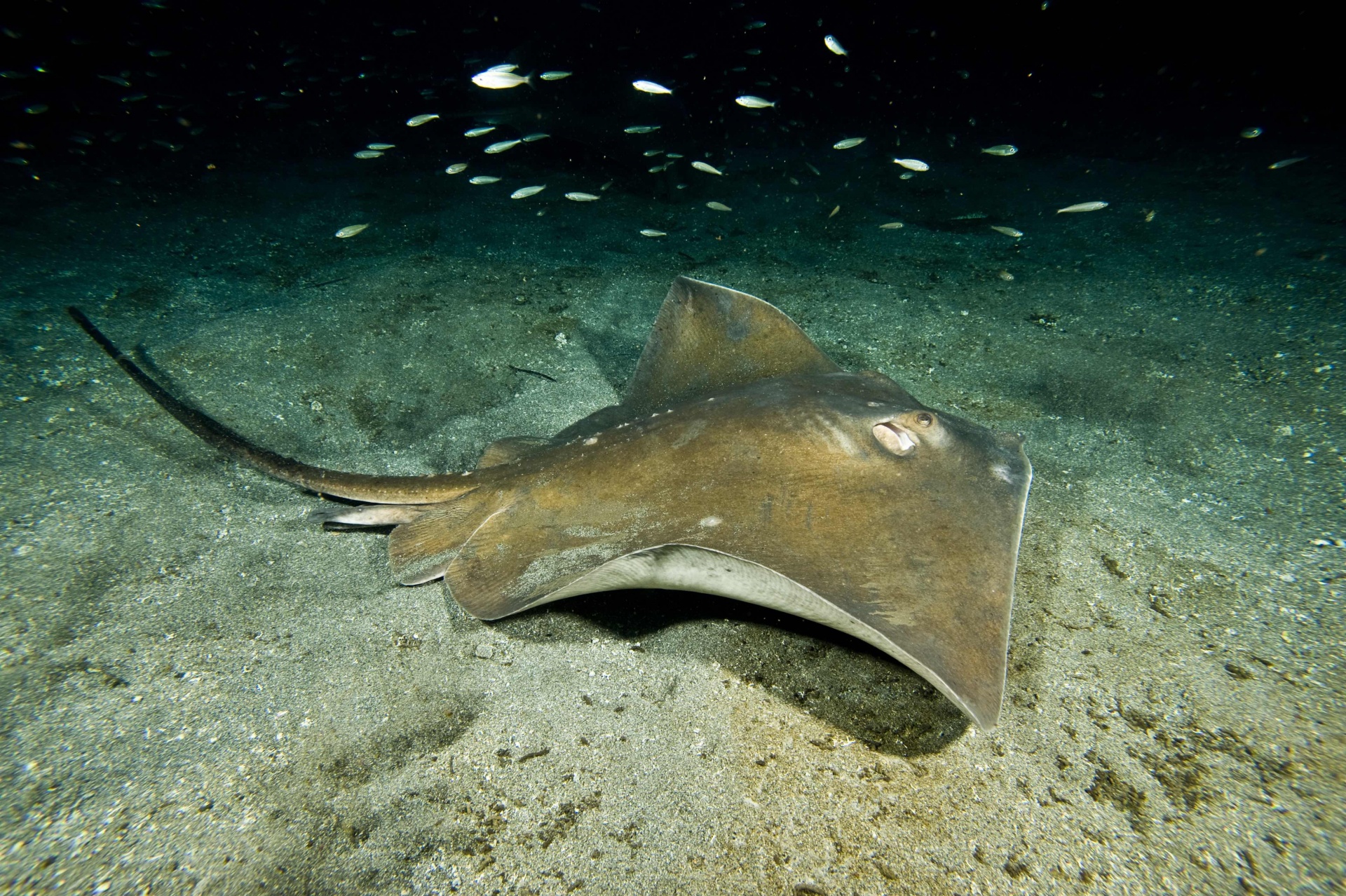The study, whose main researcher is Fernando Tuya, from the University Institute ECOAQUA of the ULPGC, records and describes the distribution of a total of 11 species of batoids in the waters of the Canary Archipelago, including those commonly known as stingrays and rays.
The journal Ecology and Evolution reports on this analysis, which shows that these species, many of which are catalogued as endangered, are more abundant in the central and eastern islands of the Canary Islands, while sparser in the western islands, something that could drive the governmental strategy to be followed in the future in terms of management and conservation actions. The geomorphological characteristics of each island should be taken into account, rather than using a common framework for all islands, as is currently the case.
The research entitled ‘Differences in the occurrence and abundance of batoids across an oceanic archipelago using complementary data sources: Implications for conservation', published in Ecology and Evolution, considers that the island configuration, with separate volcanic edifices and different geomorphology, overlain by an oceanographic gradient, influences patterns of abundance and distribution of batoids, a superorder of cartilaginous fish containing more than 500 species, eleven of which have been recorded in this research.
These results have implications for the definition of future strategies for the management and conservation of these animals, as the study considers that "a global strategy for the archipelago makes no sense", as it "must be individualised for each island, depending on its geomorphological characteristics, the intensity of uses and the abundance of the species".
Fernando Tuya, director of the Biodiversity and Conservation group (BIOCON) of the University Institute for Research in Sustainable Aquaculture and Marine Ecosystems (ECOAQUA) of the University of Las Palmas de Gran Canaria (ULPGC), is the principal investigator of the research, with the participation of Fernando Espino, David Jiménez-Alvarado, Juan José Castro, Fran Otero-Ferrer and Ricardo Haroun, also members of the BIOCON group of the University Institute ECOAQUA; and Eva Meyers from the Alexander Koenig Zoological Research Museum (ZFMK); Ricardo Aguilar, from Oceana, and Néstor Echedey Bosch, from the Atlantic Biodiversity and Sustainability Association (ABAS).
Batoids, which include popular species such as stingrays (the most abundant ray fish in the archipelago) and manta rays, are marine animals that are particularly vulnerable to human actions. Due to their spectacular and striking appearance, they are highly appreciated by recreational divers. They are very difficult to study, as they are rare and hard to find.
This makes finding data to unravel their patterns of abundance and distribution over broad spatial scales very complex, making the conservation of these marine animals extremely difficult.
According to the Unión Internacional para la Conservación de la Naturaleza (IUCN) Red List of Threatened Species, three of these species are classified as "critically endangered": Aetomylaeus bovinus, Dipturus batis and Myliobatis Aquila, and three are "endangered": Gymnura altavela, Mobula mobular and Rostroraja alba.
In addition, two of the batoids are considered "vulnerable": Dasyatis pastinaca and Raja maderenseis, and two have "insufficient data": Taeniurops grabata and Torpedo marmorata. One species, Bathytoshia lata, is of "Least Concern". All of them, eleven in total, were studied in the research led by ECOAQUA.
For the study, data from visual surveys published in the last 30 years and citizen science observations (red PROMAR) in shallow waters (< 40 metres) were used. Videos recorded by an underwater robot in deep waters (60-700 metres), collected by the NGO Oceana, were also used to describe the distribution of the aforementioned total of 11 species throughout the Canary Islands.
A total of 226 batoid records were collected. In general, higher abundances were observed in the central and eastern islands, relative to the western islands. In the central and eastern islands, batoids were observed in a wider variety of habitats than in the western islands, where they were recorded exclusively on reefs.
In general, about 52% of the reported batoids were observed under marine cage farms, about 28% on reefs, about 12% in seagrass beds and another 7% on sandy bottoms, resulting in statistically significant differences. Contrary to these patterns, the only individual of the charismatic giant devil ray, Mobula mobular, was observed in the western islands.


